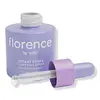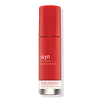What's inside
What's inside
 Key Ingredients
Key Ingredients

 Benefits
Benefits

 Ingredients Side-by-side
Ingredients Side-by-side

Water
Skin ConditioningGlycerin
HumectantButylene Glycol
HumectantLimnanthes Alba Seed Oil Ethyl Esters
EmollientHyaluronic Acid
HumectantAnthemis Nobilis Flower Water
MaskingCucumis Sativus Fruit Water
Skin ConditioningCitrullus Lanatus Fruit Extract
Skin ConditioningPyrus Malus Fruit Extract
Skin ConditioningRosa Gallica Flower Extract
AstringentAloe Barbadensis Leaf Juice
Skin ConditioningLens Esculenta Fruit Extract
Skin ConditioningCaffeine
Skin ConditioningPropanediol
SolventCarbomer
Emulsion StabilisingTriheptanoin
Skin ConditioningC13-15 Alkane
SolventSodium Phytate
Ethylhexylglycerin
Skin ConditioningHydroxyacetophenone
AntioxidantMethylglucamine
Pentylene Glycol
Skin ConditioningTocopheryl Acetate
AntioxidantXanthan Gum
EmulsifyingSodium Lactate
BufferingPotassium Sorbate
PreservativeSodium Benzoate
MaskingSodium PCA
HumectantCitric Acid
BufferingGlyceryl Acrylate/Acrylic Acid Copolymer
HumectantPhenoxyethanol
PreservativeWater, Glycerin, Butylene Glycol, Limnanthes Alba Seed Oil Ethyl Esters, Hyaluronic Acid, Anthemis Nobilis Flower Water, Cucumis Sativus Fruit Water, Citrullus Lanatus Fruit Extract, Pyrus Malus Fruit Extract, Rosa Gallica Flower Extract, Aloe Barbadensis Leaf Juice, Lens Esculenta Fruit Extract, Caffeine, Propanediol, Carbomer, Triheptanoin, C13-15 Alkane, Sodium Phytate, Ethylhexylglycerin, Hydroxyacetophenone, Methylglucamine, Pentylene Glycol, Tocopheryl Acetate, Xanthan Gum, Sodium Lactate, Potassium Sorbate, Sodium Benzoate, Sodium PCA, Citric Acid, Glyceryl Acrylate/Acrylic Acid Copolymer, Phenoxyethanol
Water
Skin ConditioningHydroxyethylcellulose
Emulsion StabilisingAngelica Archangelica Root Water
Skin ConditioningDimethyl Isosorbide
SolventAstaxanthin
Skin ConditioningErgothioneine
AntioxidantOxycoccus Palustris Seed Oil
AntioxidantRubus Chamaemorus Seed Oil
Skin ConditioningFullerenes
AntimicrobialPropanediol
SolventHaematococcus Pluvialis Extract
AntioxidantCamelina Sativa Seed Oil
Skin ConditioningThymus Vulgaris Flower/Leaf Extract
MaskingBuddleja Davidii Extract
Skin ConditioningGlycerin
HumectantZinc PCA
HumectantSimmondsia Chinensis Seed Oil
EmollientPanax Ginseng Root Extract
EmollientGlycosphingolipids
EmollientHippophae Rhamnoides Fruit Oil
Skin ProtectingPerfluorodecalin
Skin ConditioningTocopherol
AntioxidantTocopheryl Acetate
AntioxidantXanthan Gum
EmulsifyingEthylhexylglycerin
Skin ConditioningRosmarinus Officinalis Extract
AntimicrobialHelianthus Annuus Seed Oil
EmollientSodium Phytate
Butylene Glycol
HumectantPhenoxyethanol
PreservativeHydroxyacetophenone
AntioxidantPvp
Emulsion StabilisingSucrose Palmitate
EmollientCitric Acid
BufferingPotassium Sorbate
PreservativeSodium Benzoate
MaskingWater, Hydroxyethylcellulose, Angelica Archangelica Root Water, Dimethyl Isosorbide, Astaxanthin, Ergothioneine, Oxycoccus Palustris Seed Oil, Rubus Chamaemorus Seed Oil, Fullerenes, Propanediol, Haematococcus Pluvialis Extract, Camelina Sativa Seed Oil, Thymus Vulgaris Flower/Leaf Extract, Buddleja Davidii Extract, Glycerin, Zinc PCA, Simmondsia Chinensis Seed Oil, Panax Ginseng Root Extract, Glycosphingolipids, Hippophae Rhamnoides Fruit Oil, Perfluorodecalin, Tocopherol, Tocopheryl Acetate, Xanthan Gum, Ethylhexylglycerin, Rosmarinus Officinalis Extract, Helianthus Annuus Seed Oil, Sodium Phytate, Butylene Glycol, Phenoxyethanol, Hydroxyacetophenone, Pvp, Sucrose Palmitate, Citric Acid, Potassium Sorbate, Sodium Benzoate
 Reviews
Reviews

Ingredients Explained
These ingredients are found in both products.
Ingredients higher up in an ingredient list are typically present in a larger amount.
Butylene Glycol (or BG) is used within cosmetic products for a few different reasons:
Overall, Butylene Glycol is a safe and well-rounded ingredient that works well with other ingredients.
Though this ingredient works well with most skin types, some people with sensitive skin may experience a reaction such as allergic rashes, closed comedones, or itchiness.
Learn more about Butylene GlycolCitric Acid is an alpha hydroxy acid (AHA) naturally found in citrus fruits like oranges, lemons, and limes.
Like other AHAs, citric acid can exfoliate skin by breaking down the bonds that hold dead skin cells together. This helps reveal smoother and brighter skin underneath.
However, this exfoliating effect only happens at high concentrations (20%) which can be hard to find in cosmetic products.
Due to this, citric acid is usually included in small amounts as a pH adjuster. This helps keep products slightly more acidic and compatible with skin's natural pH.
In skincare formulas, citric acid can:
While it can provide some skin benefits, research shows lactic acid and glycolic acid are generally more effective and less irritating exfoliants.
Most citric acid used in skincare today is made by fermenting sugars (usually from molasses). This synthetic version is identical to the natural citrus form but easier to stabilize and use in formulations.
Read more about some other popular AHA's here:
Learn more about Citric AcidEthylhexylglycerin (we can't pronounce this either) is commonly used as a preservative and skin softener. It is derived from glyceryl.
You might see Ethylhexylglycerin often paired with other preservatives such as phenoxyethanol. Ethylhexylglycerin has been found to increase the effectiveness of these other preservatives.
Glycerin is already naturally found in your skin. It helps moisturize and protect your skin.
A study from 2016 found glycerin to be more effective as a humectant than AHAs and hyaluronic acid.
As a humectant, it helps the skin stay hydrated by pulling moisture to your skin. The low molecular weight of glycerin allows it to pull moisture into the deeper layers of your skin.
Hydrated skin improves your skin barrier; Your skin barrier helps protect against irritants and bacteria.
Glycerin has also been found to have antimicrobial and antiviral properties. Due to these properties, glycerin is often used in wound and burn treatments.
In cosmetics, glycerin is usually derived from plants such as soybean or palm. However, it can also be sourced from animals, such as tallow or animal fat.
This ingredient is organic, colorless, odorless, and non-toxic.
Glycerin is the name for this ingredient in American English. British English uses Glycerol/Glycerine.
Learn more about GlycerinHydroxyacetophenone is antioxidant with skin conditioning and soothing properties. It also boosts the efficiency of preservatives.
This ingredient is not irritating or sensitizing.
Phenoxyethanol is a preservative that has germicide, antimicrobial, and aromatic properties. Studies show that phenoxyethanol can prevent microbial growth. By itself, it has a scent that is similar to that of a rose.
It's often used in formulations along with Caprylyl Glycol to preserve the shelf life of products.
Potassium Sorbate is a preservative used to prevent yeast and mold in products. It is commonly found in both cosmetic and food products.
This ingredient comes from potassium salt derived from sorbic acid. Sorbic acid is a natural antibiotic and effective against fungus.
Both potassium sorbate and sorbic acid can be found in baked goods, cheeses, dried meats, dried fruit, ice cream, pickles, wine, yogurt, and more.
You'll often find this ingredient used with other preservatives.
Learn more about Potassium SorbatePropanediol is an all-star ingredient. It softens, hydrates, and smooths the skin.
It’s often used to:
Propanediol is not likely to cause sensitivity and considered safe to use. It is derived from corn or petroleum with a clear color and no scent.
Learn more about PropanediolSodium Benzoate is a preservative. It's used in both cosmetic and food products to inhibit the growth of mold and bacteria. It is typically produced synthetically.
Both the US FDA and EU Health Committee have approved the use of sodium benzoate. In the US, levels of 0.1% (of the total product) are allowed.
Sodium benzoate works as a preservative by inhibiting the growth of bacteria inside of cells. It prevents the cell from fermenting a type of sugar using an enzyme called phosphofructokinase.
It is the salt of benzoic acid. Foods containing sodium benzoate include soda, salad dressings, condiments, fruit juices, wines, and snack foods.
Studies for using ascorbic acid and sodium benzoate in cosmetics are lacking, especially in skincare routines with multiple steps.
We always recommend speaking with a professional, such as a dermatologist, if you have any concerns.
Learn more about Sodium BenzoateSodium Phytate is the synthetic salt form of phytic acid. Phytic acid is an antioxidant and can be found in plant seeds.
Sodium Phytate is a chelating agent. Chelating agents help prevent metals from binding to water. This helps stabilize the ingredients and the product.
Tocopheryl Acetate is AKA Vitamin E. It is an antioxidant and protects your skin from free radicals. Free radicals damage the skin by breaking down collagen.
One study found using Tocopheryl Acetate with Vitamin C decreased the number of sunburned cells.
Tocopheryl Acetate is commonly found in both skincare and dietary supplements.
Learn more about Tocopheryl AcetateWater. It's the most common cosmetic ingredient of all. You'll usually see it at the top of ingredient lists, meaning that it makes up the largest part of the product.
So why is it so popular? Water most often acts as a solvent - this means that it helps dissolve other ingredients into the formulation.
You'll also recognize water as that liquid we all need to stay alive. If you see this, drink a glass of water. Stay hydrated!
Learn more about WaterXanthan gum is used as a stabilizer and thickener within cosmetic products. It helps give products a sticky, thick feeling - preventing them from being too runny.
On the technical side of things, xanthan gum is a polysaccharide - a combination consisting of multiple sugar molecules bonded together.
Xanthan gum is a pretty common and great ingredient. It is a natural, non-toxic, non-irritating ingredient that is also commonly used in food products.
Learn more about Xanthan Gum